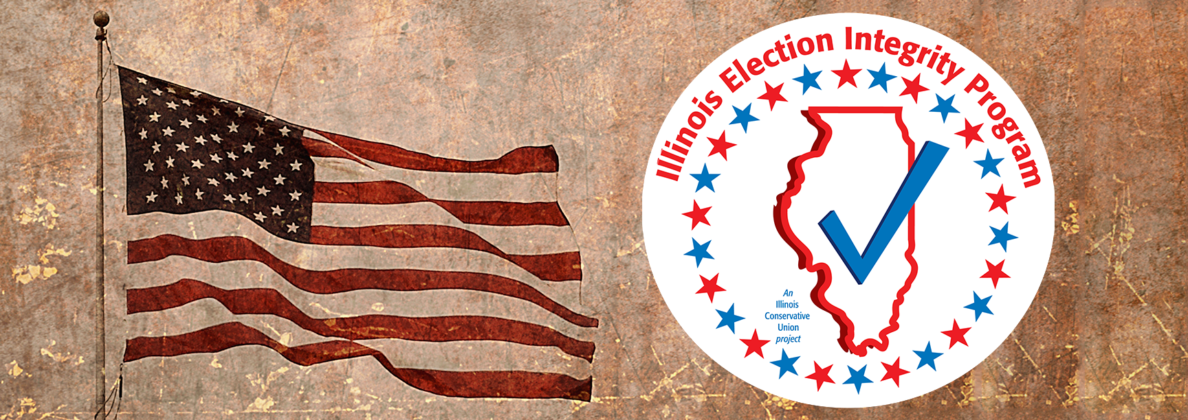Timeline of SOS & SBOE AVR Problems
- SOS = Secretary of State (Jesse Whites office)
- SBOE = State Board of Elections
- AVR = Automatic Voter Registration
Illinois State Representative Tim Butler has called out the errors in the AVR. In the video (below), he discusses a timeline of the AVR events that transpired. He also has submitted HB5224 which calls out for the AVR suspension and HR827 requesting an outside audit be performed. All of this affects our intention to clean up the voter rolls
The video is dated 3/11/2020
Here is the AVR timeline as referenced in Tim Butler’s video (above).
- 7/24/2019 ICU sent a letter ( signed by Carol Davis, Jan Shaw, Loretta Savee, Jane Carrell) to SBOE Director Sandvoss, requesting documents and voter data for voter list maintenance verification, pursuant to NVRA
- 8/14/2019 SBOE response (received 8/19/2019) some information, but not everything we requested. They refused to include registered voter data.
- 11/18/2019 ICU sent a vote-by-mail survey to Illinois county clerks/election authorities (none answered. We are not pressing it)
- 11/27/2019 ICU’s NVRA notice of violation received by SBOE (letter dated 11/18/2019)
- 12/12/18/2019 SOS notified SBOE by letter that there was an AVR programming problem (574 non-citizens registered to vote)
- 1/4/2019 a letter, “Automatic Voter Registration Update” from Dustin Schultz (AVR Coordinator) states “IT Staff completed and pushed to production an AVR management application, which allows VRS staff to generate notification letters to send to non-qualified underage applicants… Approximately 800 letters have been sent to applicants who were underage and therefore ineligible to apply to register to vote since deployment of the AVR management application.”
- 1/15/2020 ICU-friend, Diane Benjamin of BLNNEWS broke the story “Secretary of State tells Election Authorities they registered non-citizens”
- 1/17/2020 Illinois Review “ILLINOIS SEC OF STATE “MISTAKENLY” REGISTERS OVER 500 NON-CITIZENS TO VOTE”
- 1/19/2020 BLNNEWS “DMV ISN’T ALLOWED TO ASK ABOUT CITIZENSHIP!”
- 1/20/2020 WCIA TV station picked up the AVR/Non-Citizen story
- 1/20/2020 after the news came out in public, Republicans called for a hearing and sent a letter to the Speaker
- 1/22/2020 Republicans held news conference and called on SBOE to conduct an independent audit of AVR
- 1/22/2020 Washington Examiner picked up the AVR/non-citizen story (it went national, covered by The Center Square, Epoch Times, New York Times, The Hill)
- 1/29/2020 SBOE (vote along partisan lines) voted down the review of the AVR system
- 1/29/2020 SOS admitted they were sending 16-yr olds’ data to local election authorities (too young to vote)
- 1/30/2020 The State Journal-Register Published an article “Policy change: Secretary of State won’t forward 16-year-olds’ info to voter registration system” The information for approximately 4,700 16-year-olds was forwarded from the SOS to the SBOE as part of AVR, no underage people were registered to vote. (Note, 1/4/2019 entry said 800 letters, this story says 4,700. Hmmm…)
- 1/31/2020 BLNNEWS story “What Happens When Non-Citizens Are Called For Jury Duty?”
- 2/4/2020 Jan Shaw sent email notes to Republican members of House Exec committee & to the chair to add as written testimony (not sure if he attached it for me). Big point: non-citizens can have Social Security numbers and Drivers’ licenses just like citizens. Can Election clerks verify citizenship?
- 2/5/2020 Exec committee hearing at which Jesse White, SOS assured them that the problems were “fixed.” (ICU members, Jan Shaw & Loretta Savee attended)
- 2/7/2020 SOS tells SBOE they will NOT be transmitting info on the weekends involving AVR
- 2/14/2020 Tim Butler – introduced a bill, HB 5224, to suspend AVR until we can do a review and get it back up and running correctly.
- 2/19/2020 ICU (Carol Davis, Jan Shaw, Loretta Savee & Theresa Johanson) met with IL House Republicans to let them know what we are doing. I asked if they could help get data about non-citizens being on the Jury Pool list.
- 2/25/2020 Congressman Davis convened an AVR listening session in Springfield, where SOS, SBOE, and local election officials were heard from. Again, assured things were corrected
- 2/25/2020 ICU’s 90-day Notice of NVRA violation is up (we are contemplating our next step)
- 2/28/2020 advocacy groups filed a lawsuit against SOS & SBOE for “Bungling the implementation” of AVR.
- 3/1/2020 cut-off to register via AVR for 3/17/2020 primary (can still register at the polling place or the election authority).
- 3/10/2020 a letter from SOS to SBOE identifying a third programming error that left 1,152 REAL ID valid voter registrations denied as opting out. Also, there was an error displaying the application date.
- Sangamon county clerk says there were over 100 related to him that were at issue, where SBOE said only 20.
Republicans are calling for an independent AUDIT of AVR, another exec committee hearing… and to pass HB-5224 and HR827.
